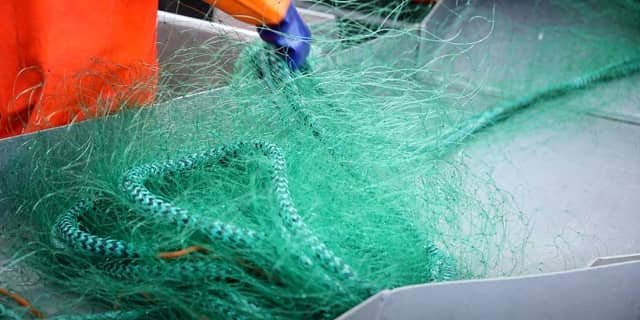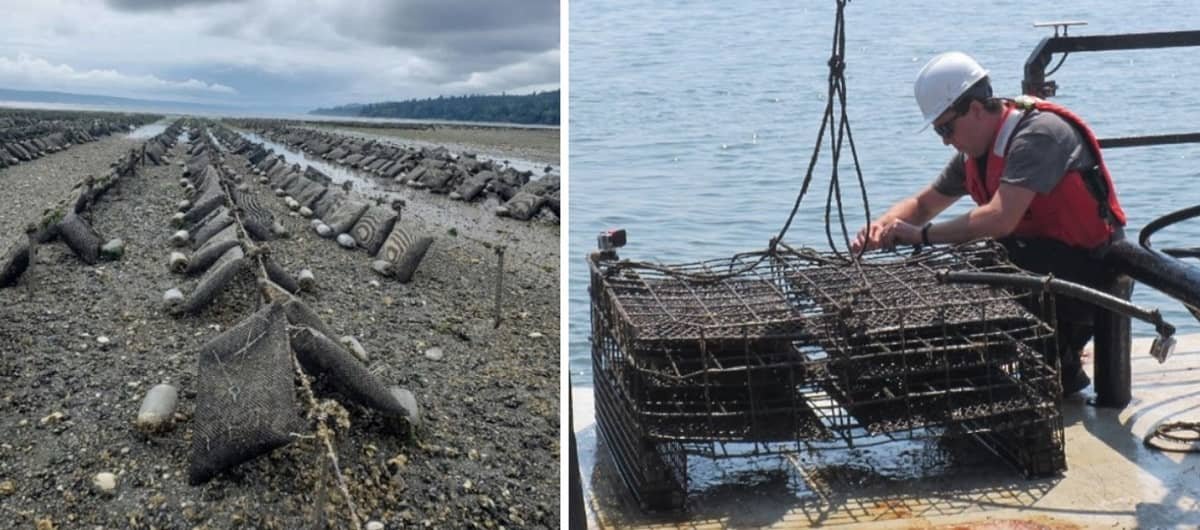
By Christina Benjaminsen, Norwegian Scitech News
The fisheries and aquaculture sectors are major users of plastics. A research project has recently been launched to investigate how these plastics can be recycled and made into new products.
Most of the plastic waste currently found in the oceans is derived from the fisheries and aquaculture sectors. The plastic fishing gear used in these sectors may contain any one of several components and chemicals. Rope may be made of plastic incorporating metal wire, and plastic nets impregnated with copper to prevent fouling. Other equipment may contain lead to keep it stable below the water surface. And these are just a few examples.
Such equipment makes the recycling of plastic waste from the fisheries and aquaculture sectors a complicated process. In the new project, called SHIFT-PLASTICS, SINTEF is joining forces with the Western Norway Research Institute (WNRI/Vestlandsforskning) to investigate the technical challenges and opportunities linked to this recycling issue.
Macro to micro
A key aspect of the project is to identify a best practice for the recovery and circular use of plastic waste. A diverse team of research scientists has been assembled to investigate the chemical composition of plastic waste, possible approaches to waste collection and sorting, and to find out which among all these components can be converted into high-quality products by means of recycling.
Another key task will be to find out whether biodegradable plastics can be used in what is termed problematic fishing gear, defined as gear that may result in the continuation of fishing (ghost fishing) for periods long after it has been removed.
“With the exception of fishing nets and crab pots made of biodegradable materials, no research of this type has been carried out on fisheries and aquaculture gear before”, says Christian Karl at SINTEF. Karl is heading that part of the project dealing with materials analysis and the evaluation of recycling opportunities.
An ambitious multi-participant project
“This is quite an ambitious project that aims to identify new holistic solutions that can contribute towards introducing the circular use of products used in the fisheries and aquaculture sectors”, says Hans Jacob Walnum, who is a Project Manager at WNRI. This includes everything from new technologies to recommendations for life cycle analyses, policy design and, not least, how new industries might be established as a result”, he says.
A total of seven research partners are involved in the project, offering expertise in technology, politics and circular value chains, as well as 20 industrial partners and public sector agencies. The project was launched early in 2021 and will continue until the middle of 2025, operating with a budget of NOK 16.2 million.
SHIFT-PLASTICS – a joint collaborative project
The SHIFT-PLASTICS project will be working closely with three other projects, all of which are looking into issues linked to the management of plastics used in the fisheries and aquaculture sectors.
Stay Always Informed
Join our communities to instantly receive the most important news, reports, and analysis from the aquaculture industry.
The project Nova Sea, in which SINTEF is also involved, is currently developing effective and locally sourced value chains that are designed to boost the recycling of plastic waste generated by the aquaculture sector.
The project POCO-plast (Paths to sustainable post-consumer plastics in the aquaculture sector), is looking into the opportunities and barriers associated with improved recycling of hard plastics generated by the aquaculture sector.
The third project, called Dsolve (Biodegradable plastics for marine applications), is based around a so-called Centre for Research-based Innovation (SFI) and was launched in 2020. The aim of the centre is to replace traditional plastics used in specific equipment applications with innovative biodegradable materials.
Contact
Editor at the digital magazine AquaHoy. He holds a degree in Aquaculture Biology from the National University of Santa (UNS) and a Master’s degree in Science and Innovation Management from the Polytechnic University of Valencia, with postgraduate diplomas in Business Innovation and Innovation Management. He possesses extensive experience in the aquaculture and fisheries sector, having led the Fisheries Innovation Unit of the National Program for Innovation in Fisheries and Aquaculture (PNIPA). He has served as a senior consultant in technology watch, an innovation project formulator and advisor, and a lecturer at UNS. He is a member of the Peruvian College of Biologists and was recognized by the World Aquaculture Society (WAS) in 2016 for his contribution to aquaculture.




